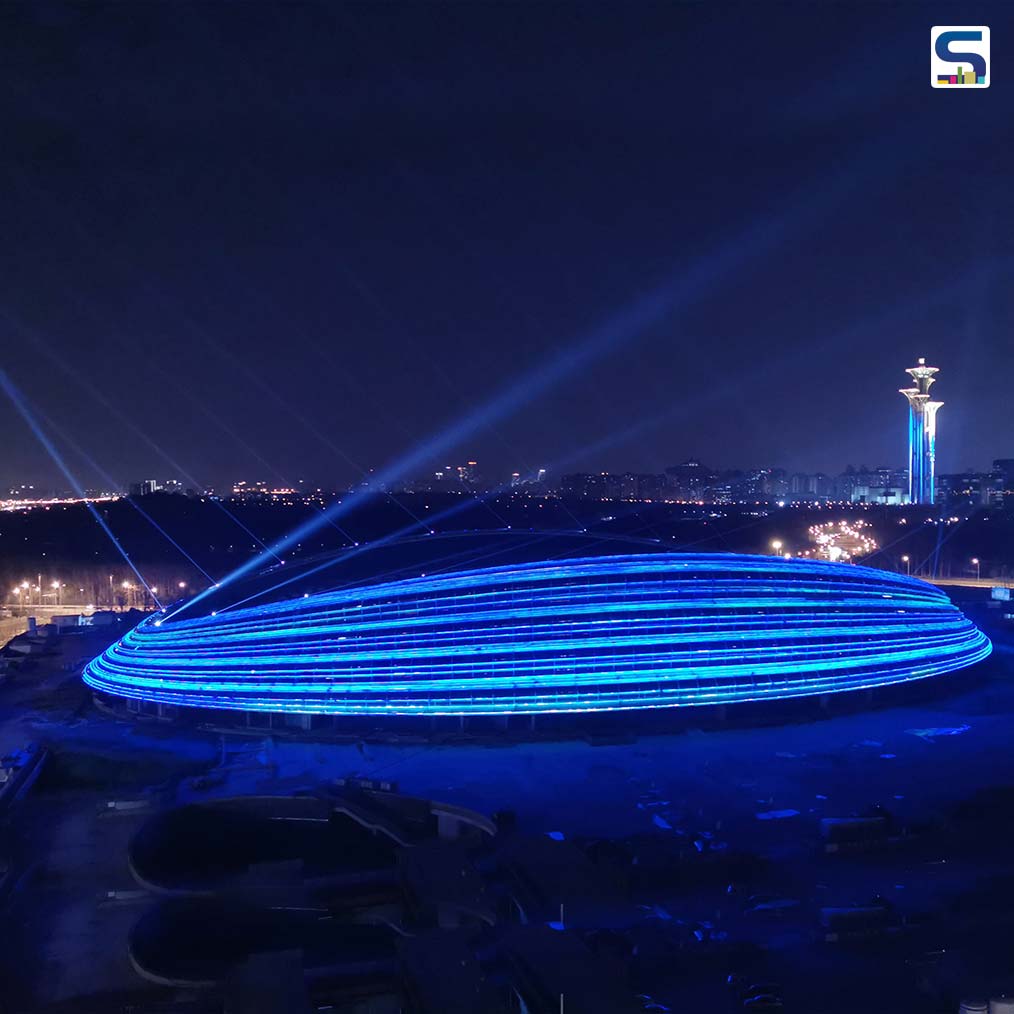
International architecture firm Populous has recently unveiled the design of the Ice Ribbon stadium for the upcoming Beijing Winter 2022 Winter Olympics. Known as the National Speed Skating Oval, the structure boasts 22 big, illuminated ribbons wrapping its facade. The arena, which can accommodate 12,000 spectators, is expected to become the centerpiece of the games that have started on 4th Feb. The shape of the pavilion is based on a spinning ice top, which is related to the principle of Populous China-Tiric Chang’s childhood memories. All the speed skating competitions during the Olympic games will take place on its 400-meter race track. SURFACES REPORTER (SR):
Also Read: 974 Vibrant Shipping Containers and Modular Steel Structure Form Demountable Stadium in Qatar | Fenwick Iribarren Architects
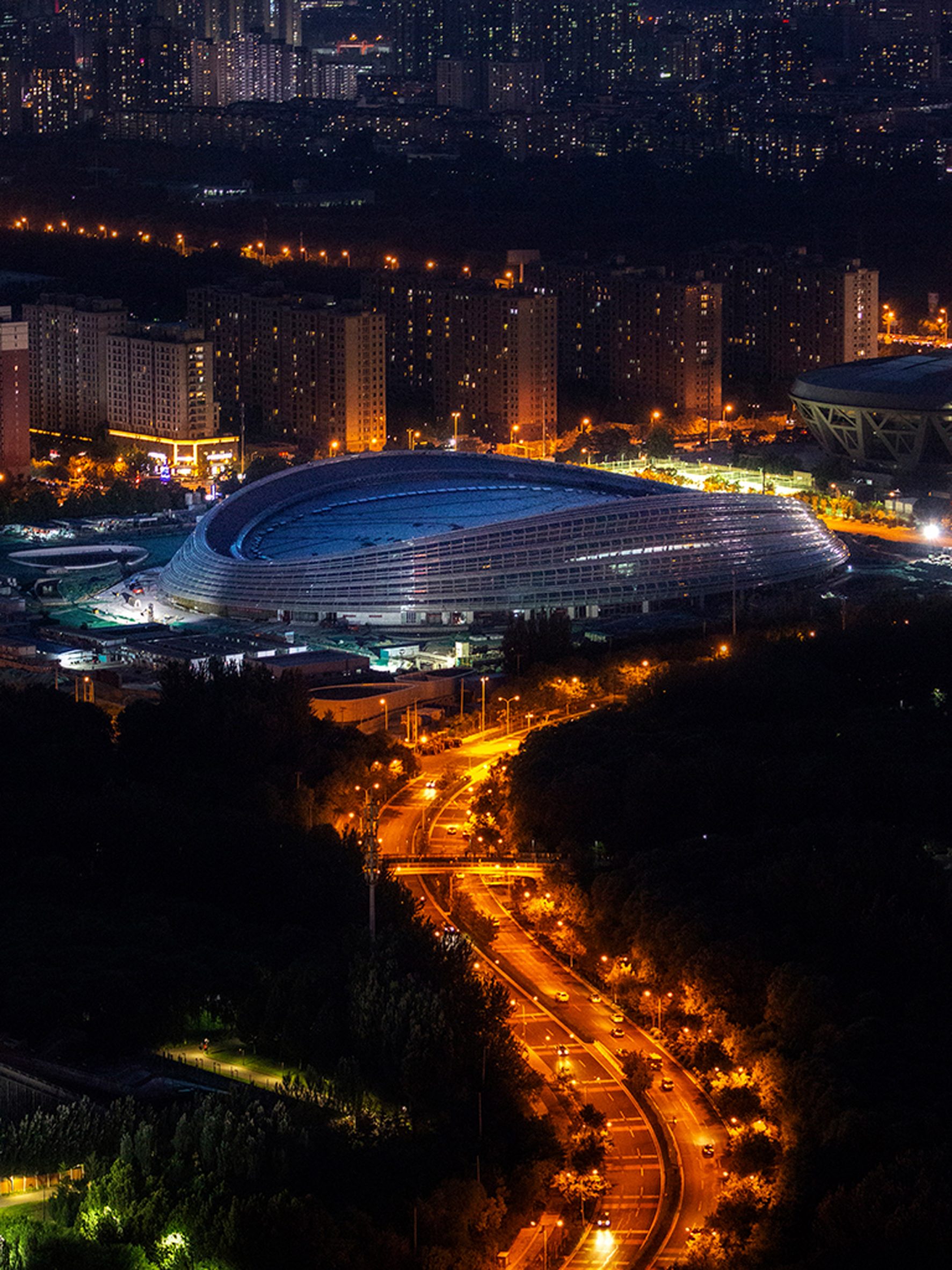 Populous won a competition to design the National Speed Skating Oval (NSSO) in 2016. It took only 12 weeks for the firm to finish the schematic design to allow construction to start on schedule. The firm associated with its entire team spread from all across the globe for the project.
Populous won a competition to design the National Speed Skating Oval (NSSO) in 2016. It took only 12 weeks for the firm to finish the schematic design to allow construction to start on schedule. The firm associated with its entire team spread from all across the globe for the project.
"The winning design for the Ice Ribbon was created in an intense time frame and was forged through several concepts and many iterations to develop a spinning concept into its final form," said senior principal Andrew James.
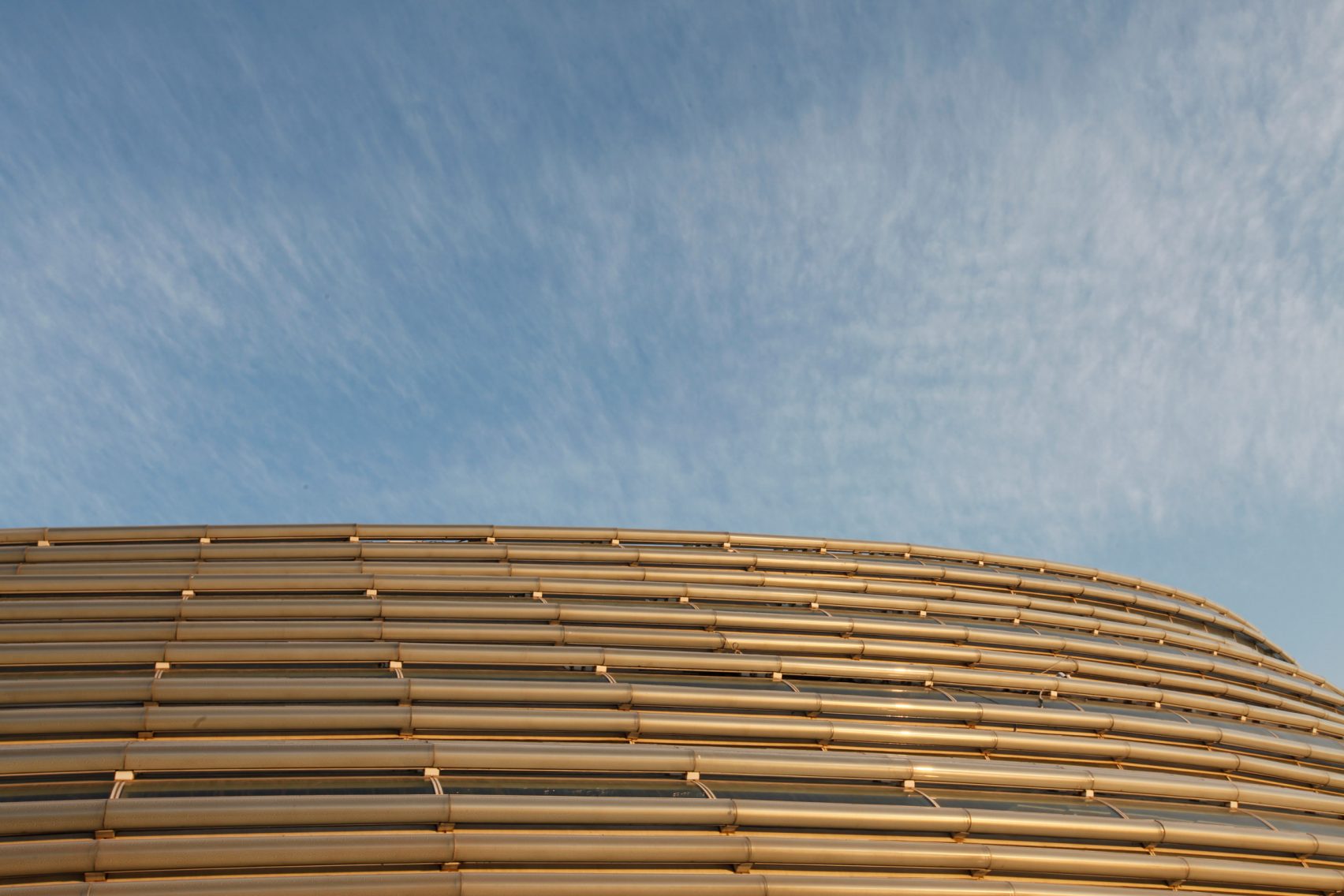 "It became a global effort with our team in Beijing, Brisbane, India, London and America drawing on our experience from Oval Lingotto in Turin, Italy, and our design of Fisht Stadium in Russia, home of the 2014 Winter Olympic Games," he further added.
"It became a global effort with our team in Beijing, Brisbane, India, London and America drawing on our experience from Oval Lingotto in Turin, Italy, and our design of Fisht Stadium in Russia, home of the 2014 Winter Olympic Games," he further added.
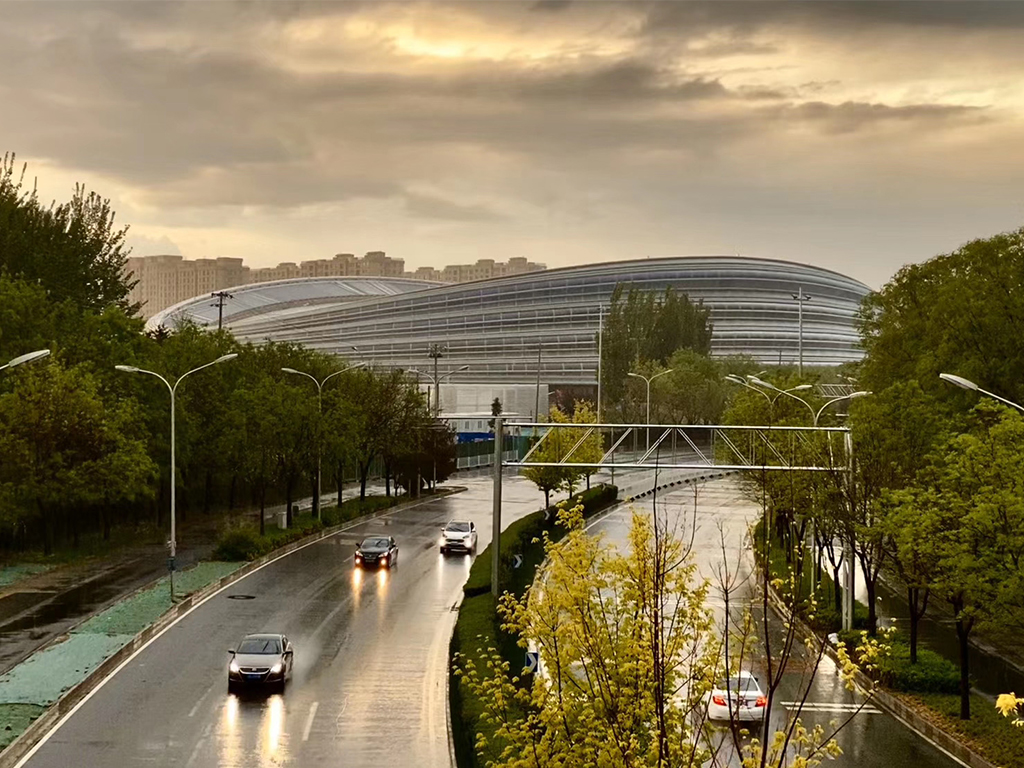 Incorporating 22 huge light strands around its oval-shaped structure, the stadium catches the attention of passersby. Further, the design creates the impression of fast motion. The stadium is adjacent to the National Aquatics Centre by PTW Architects and Herzog & de Meuron's National Stadium. These both will also host this year’s games.
Incorporating 22 huge light strands around its oval-shaped structure, the stadium catches the attention of passersby. Further, the design creates the impression of fast motion. The stadium is adjacent to the National Aquatics Centre by PTW Architects and Herzog & de Meuron's National Stadium. These both will also host this year’s games.
Spinning Ice Top Inspires The Design of the Stadium
The architect said that the design of the stadium is based on a children’s game played in Beijing. According to the architect, the shape of the stadium is inspired by the game involving high-speed spinning "ice top", which he used to play with friends in the Shichahai Park ice rink. The ribbons’ design is also influenced by his other childhood memories.
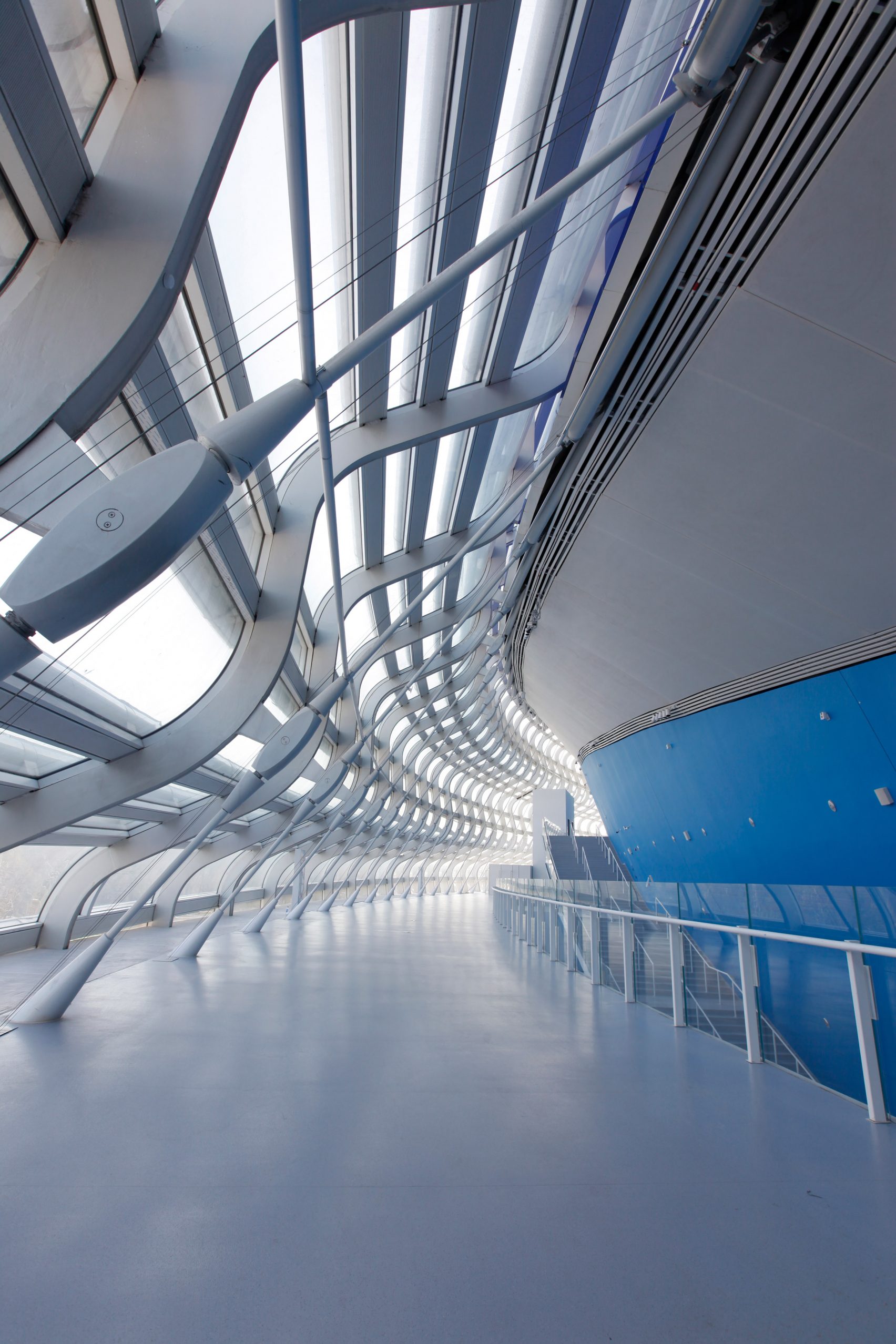 "The traditional ice game in old Beijing involved a high-speed spinning and leaping ice top that seemed to have infinite energy and possibilities," he said.
"The traditional ice game in old Beijing involved a high-speed spinning and leaping ice top that seemed to have infinite energy and possibilities," he said.
"That's what I thought of when reflecting on the characteristics of Olympic speed skating. So, the ice tops became part of the design inspiration injecting a strong Chinese memory into the venue,” he further explained.
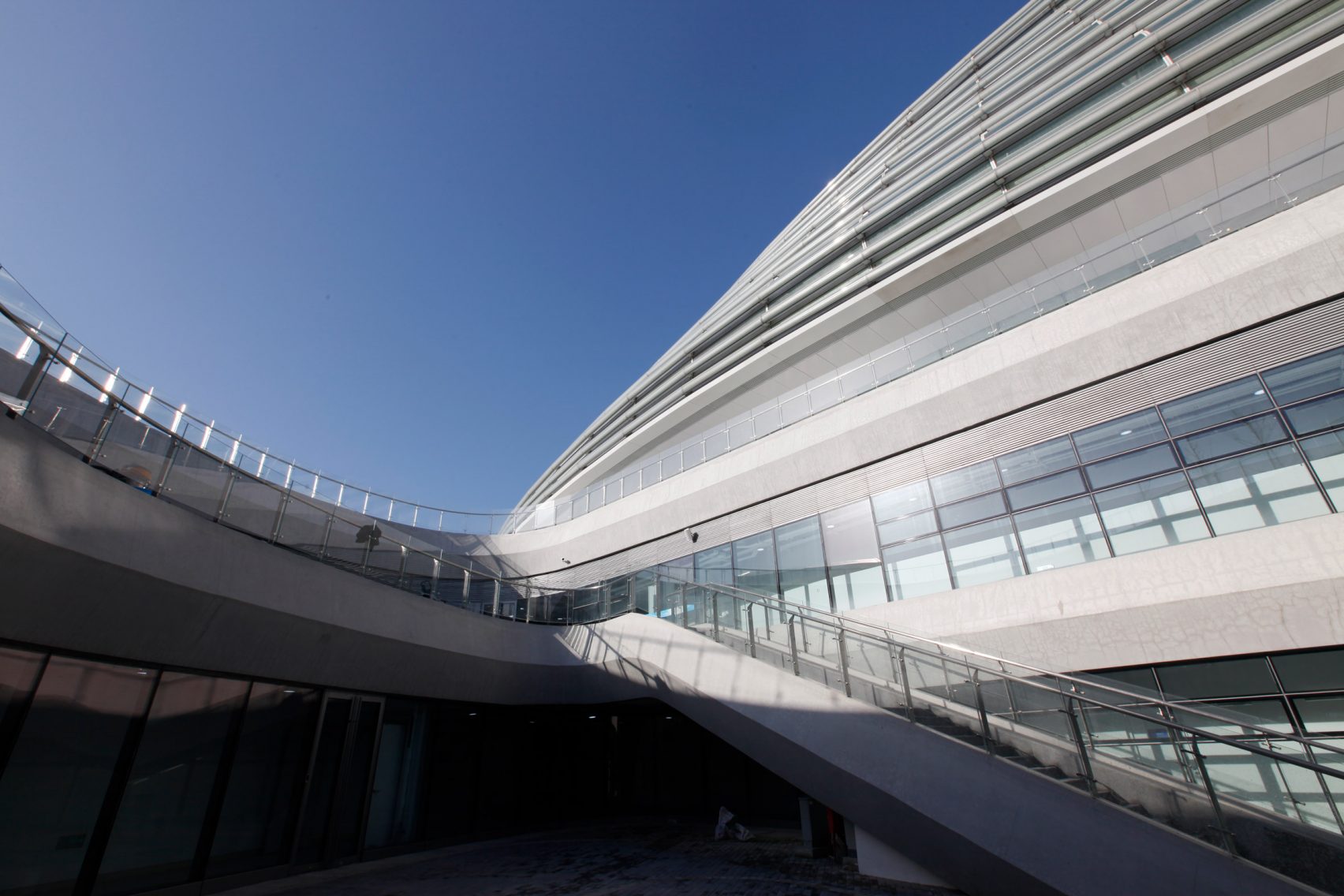 The venue encompasses in total 12,000 seats, of which 8,000 are permanent and 4,000 are temporary seats.
The venue encompasses in total 12,000 seats, of which 8,000 are permanent and 4,000 are temporary seats.
22 Huge, Illuminated Strands Covering The Facade
22 light ribbons create a 33.8-meter-high cocoon around the exterior of the arena. "The ribbons of the design refer the floating silk ribbons of the artwork my family had dedicated their time to – which was the study and preservation of the Dunhuang Grottoes, a significant collection of Buddhist art from the Tang dynasty," he said.
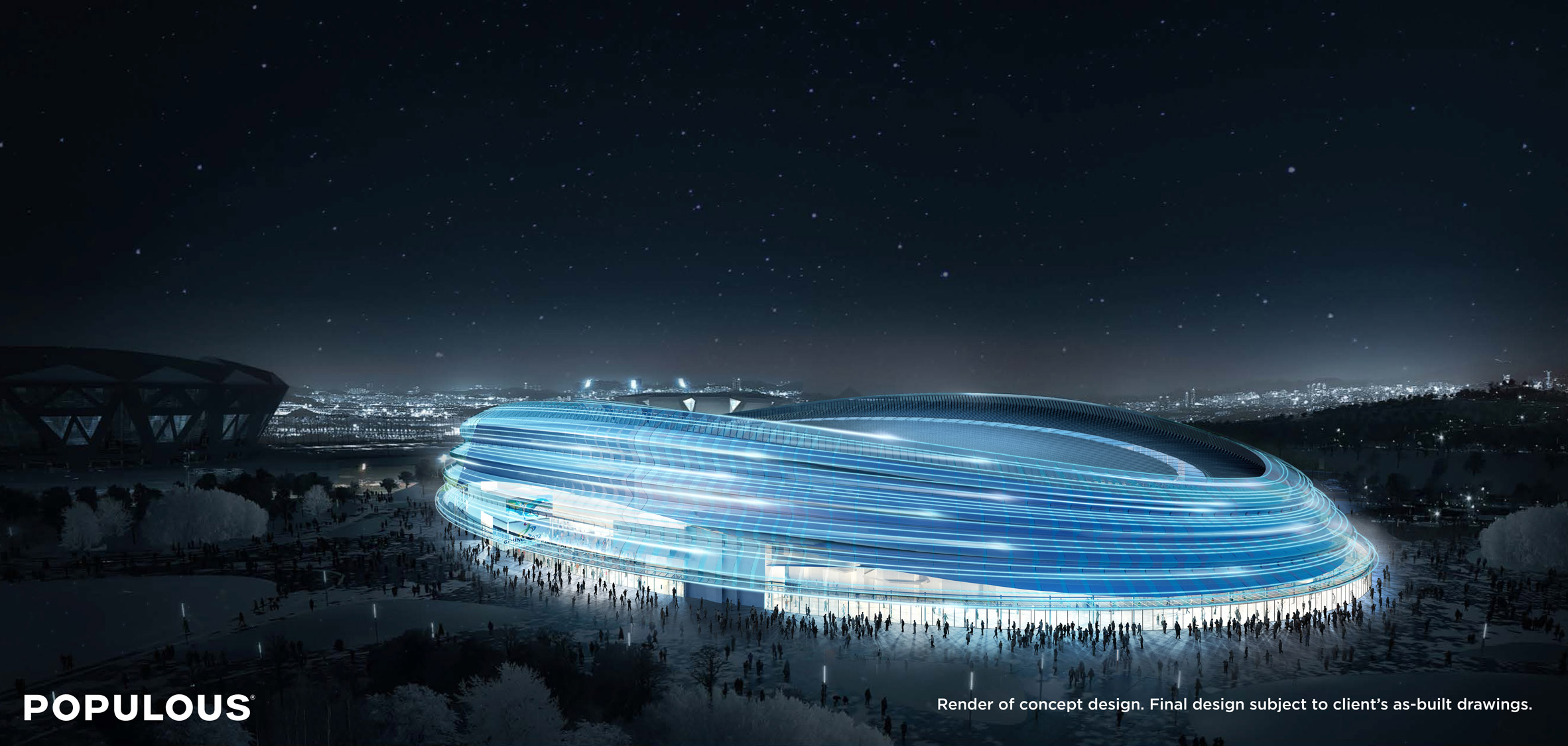 The impressive exterior attracts the spectators and gives them a more immersive experience. The facade is covered with dynamic lighting that enlivens the space at night.
The impressive exterior attracts the spectators and gives them a more immersive experience. The facade is covered with dynamic lighting that enlivens the space at night.
Also Read: The Unique Circular Shape Informs The Qatar Stadium Designed By Ibrahim M Jaidah For FIFA 2022 World Cup
Energy-Efficient Structure
The venue is said to be one of the world’s first featuring ice surfaces crafted using carbon dioxide transcritical direct cooling, making it more energy-efficient than a traditional rink. Advanced technology has been used to fully optimize its performance and reduce its environmental impact.
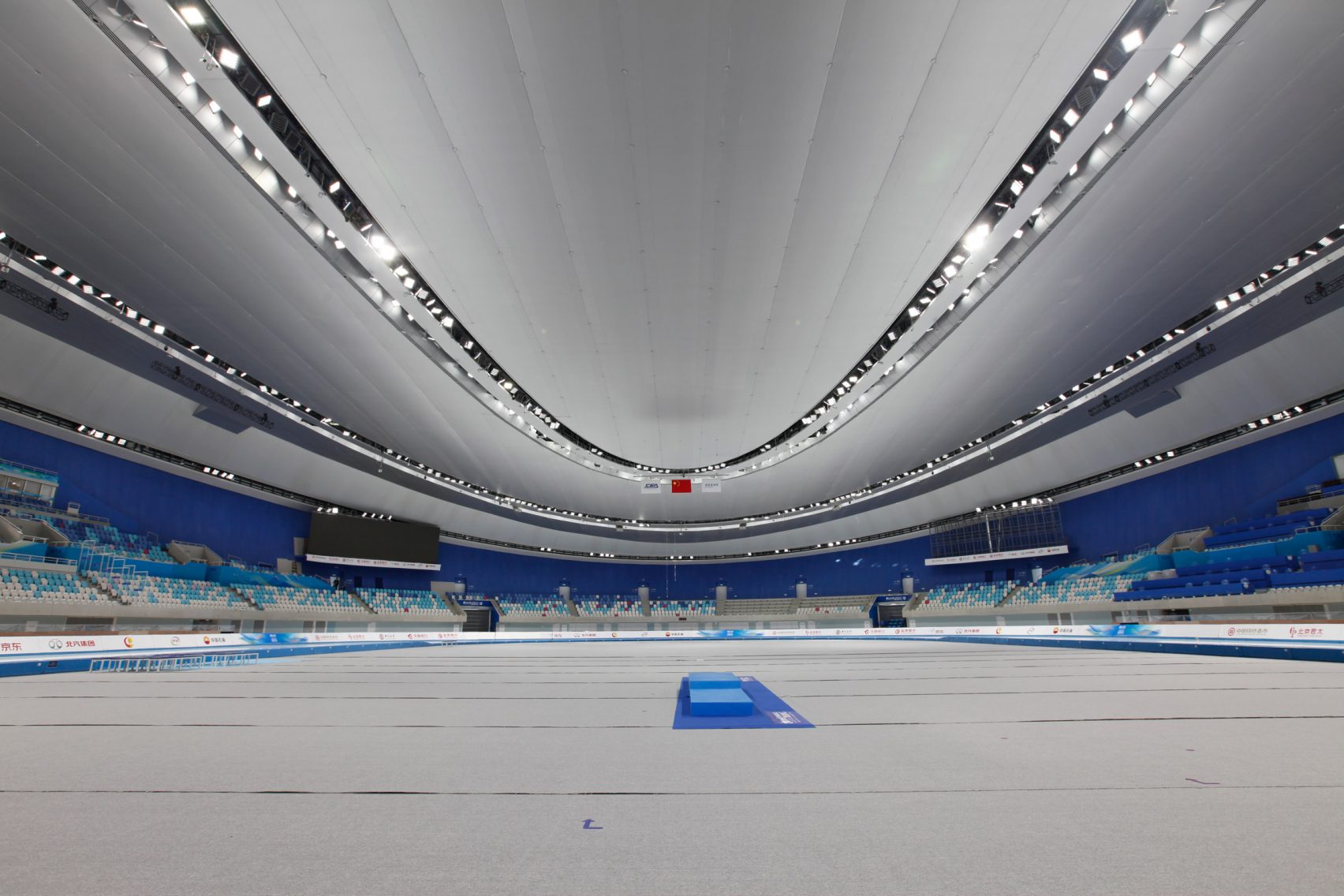 The state-of-the-art system allows maintaining a temperature difference of fewer than 0.5 degrees Celsius across the surface, which consequently makes a sturdier and faster track. Further, special attention is given to seating and acoustics so that the sound of the speed skating blades can be easily heard and the movement can be easily seen from each seat.
The state-of-the-art system allows maintaining a temperature difference of fewer than 0.5 degrees Celsius across the surface, which consequently makes a sturdier and faster track. Further, special attention is given to seating and acoustics so that the sound of the speed skating blades can be easily heard and the movement can be easily seen from each seat.
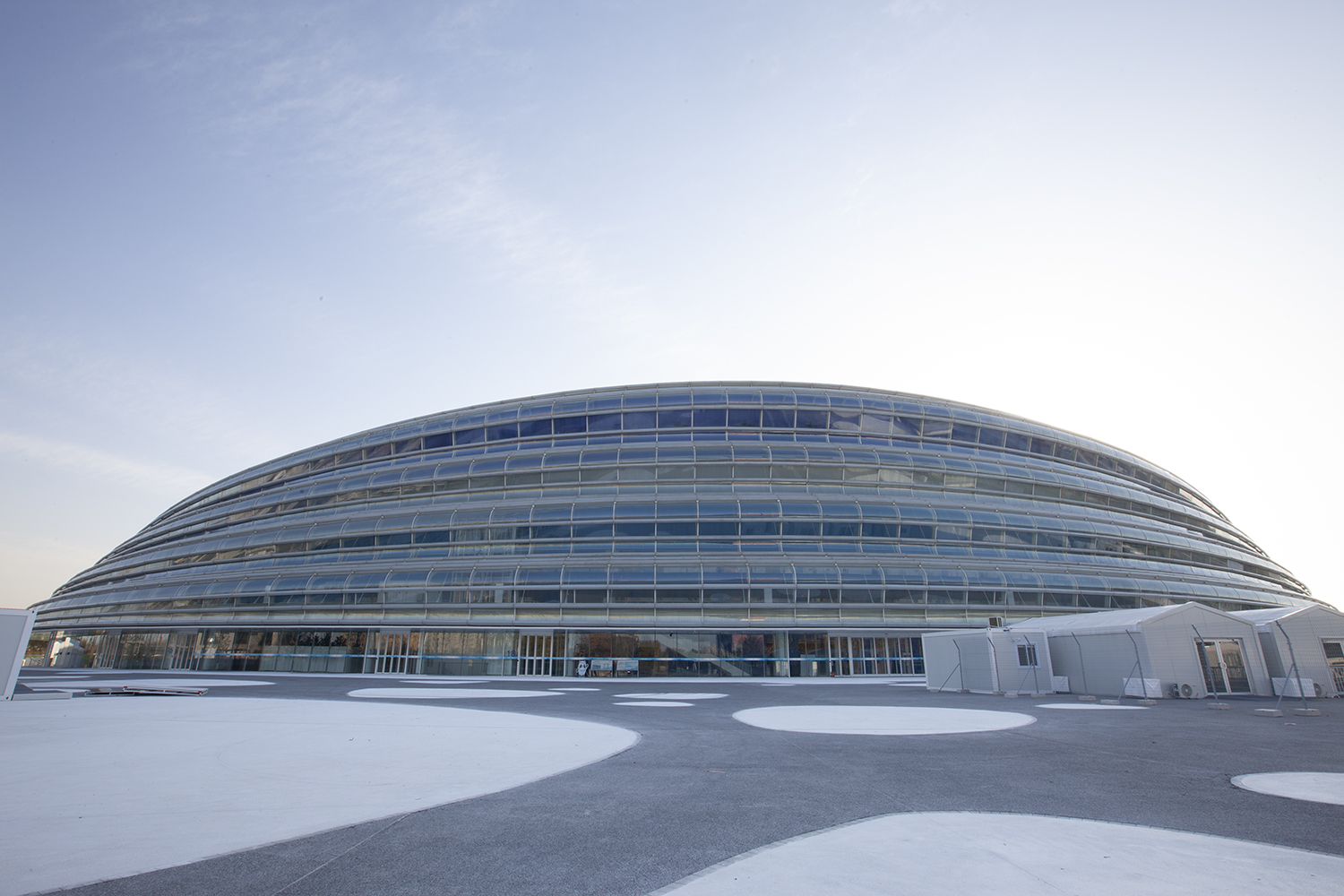 The firm has designed various venues for the Olympics, including London 2012 Olympic stadium and the Fisht Stadium for the 2014 Winter Olympic Games in Sochi. The studio is now preparing the master plan for the 2024 Olympics in Paris
The firm has designed various venues for the Olympics, including London 2012 Olympic stadium and the Fisht Stadium for the 2014 Winter Olympic Games in Sochi. The studio is now preparing the master plan for the 2024 Olympics in Paris
Keep reading SURFACES REPORTER for more such articles and stories.
Join us in SOCIAL MEDIA to stay updated
SR FACEBOOK | SR LINKEDIN | SR INSTAGRAM | SR YOUTUBE
Further, Subscribe to our magazine | Sign Up for the FREE Surfaces Reporter Magazine Newsletter
Also, check out Surfaces Reporter’s encouraging, exciting and educational WEBINARS here.
You may also like to read about:
Peony Petal and Painted Pottery Influences The Shape of the Olympic Sports Center Stadium in Linxia City, China | DUTS Design Studio
World’s Largest Walk-Through Kaleidoscope Accentuates Saudi Arabia’s Natural Habitat | Stufish
Zhanjiang Central Station Hub Takes The Shape of A Blooming Bauhinia Flower in China | Aedas
And more…